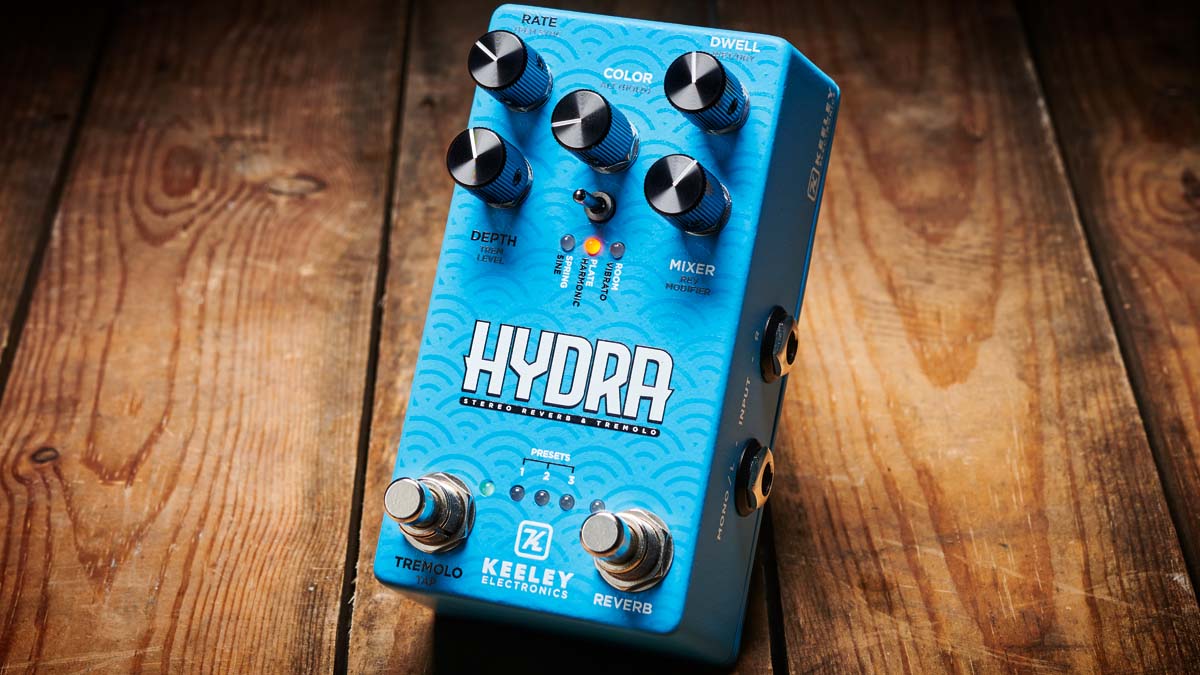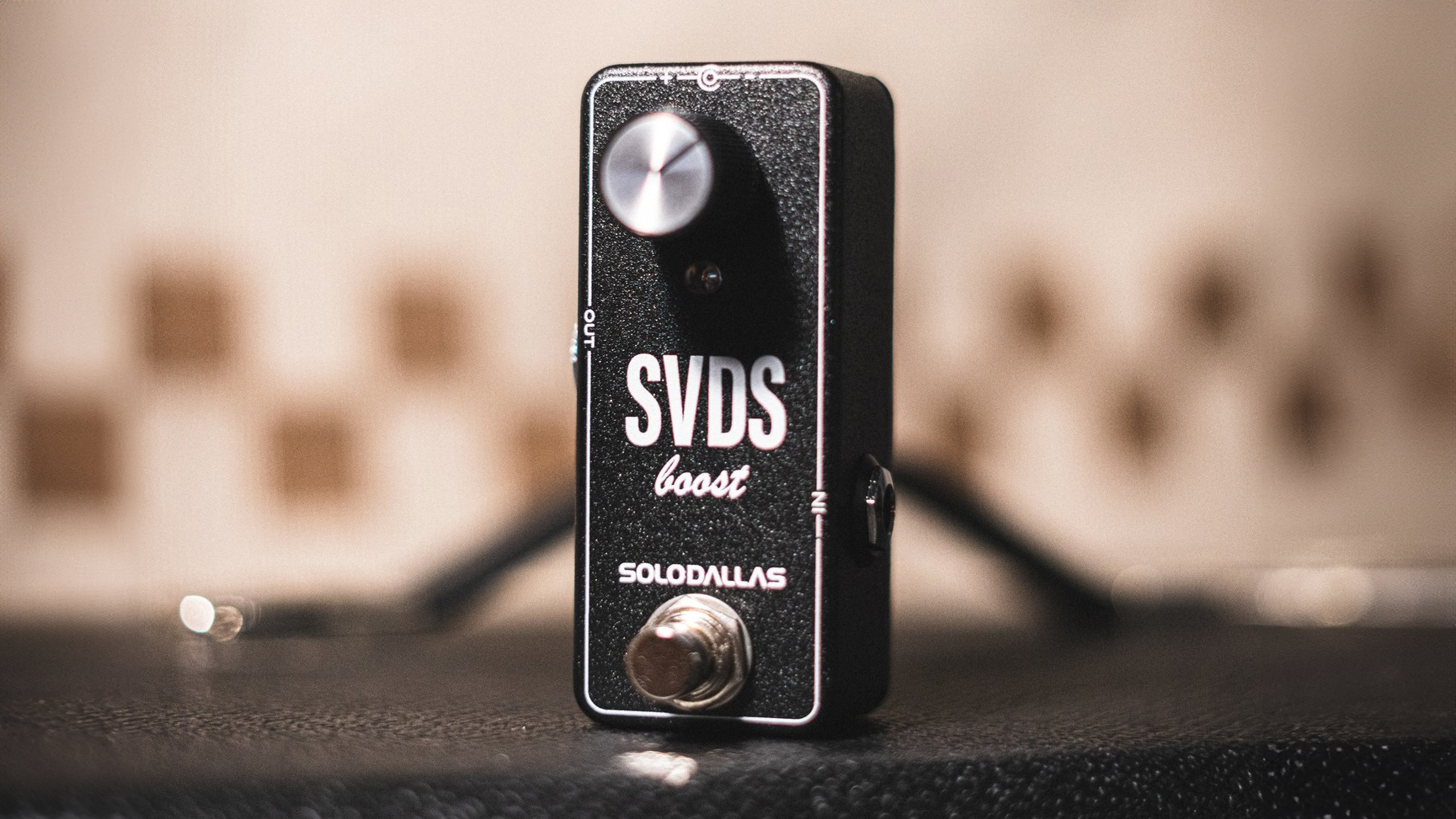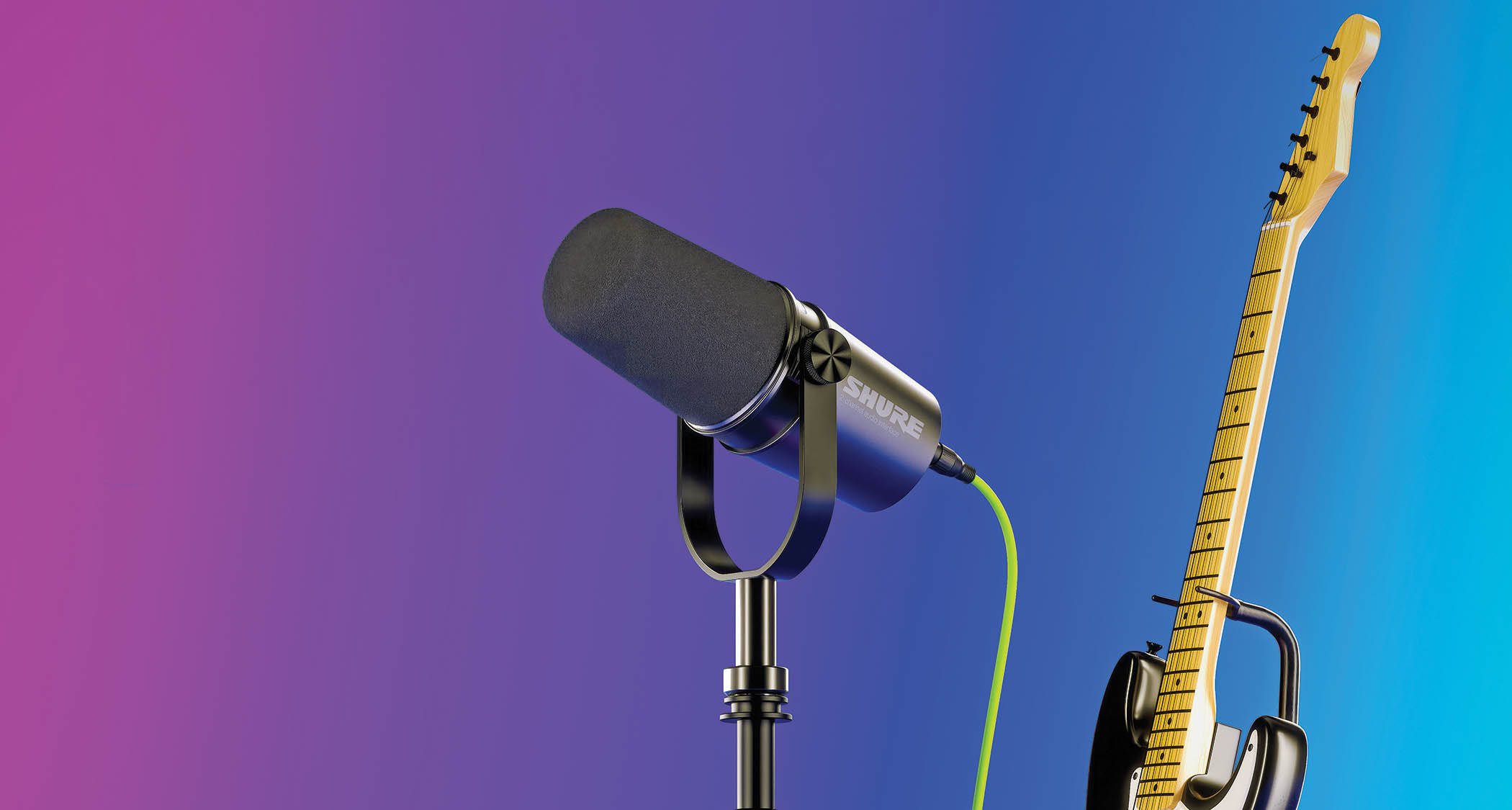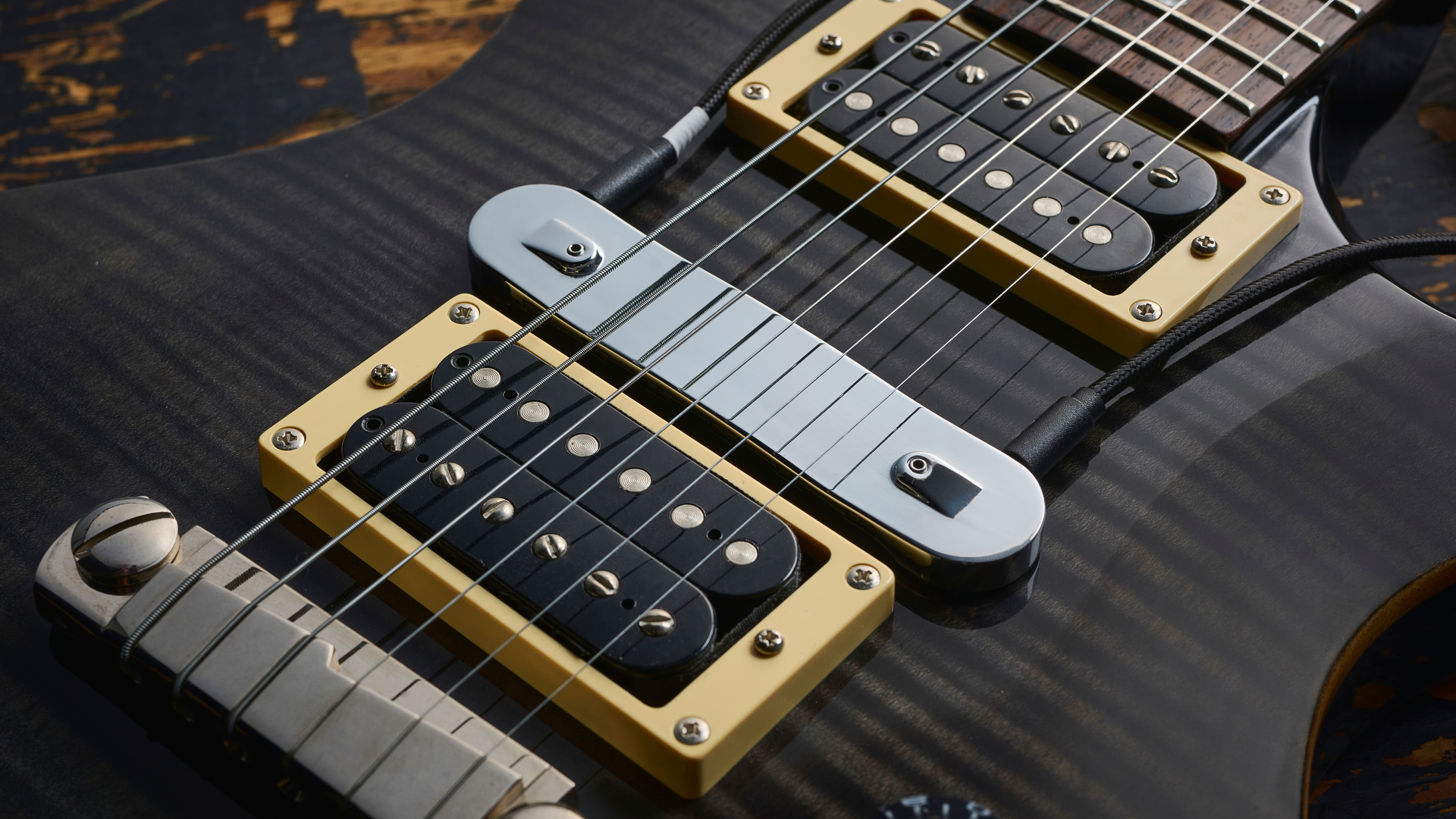Guitar World Verdict
Not only a space-saving way to add both tremolo and reverb to your pedalboard, the Hydra also features quality sounds and has practical footswitching capabilities for handy onstage use.
Pros
- +
Tremolo and reverb in one box.
- +
Compact size.
- +
Extensive parameter set.
- +
Onboard presets.
- +
Tap tempo.
- +
Expression pedal functions.
Cons
- -
This one’s not for you if you don’t want tremolo and reverb next to each other in the signal chain.
You can trust Guitar World
Maybe it was the idea of giving any amp the built-in ‘effects’ found in vintage Fender amps that spawned the first pedal to combine reverb and tremolo, but that type of stompbox has become a bit of staple represented by the likes of Strymon’s Flint, Fender’s TreVerb and Source Audio’s True Spring, to name just three.
Now there’s a new one from Keeley. The brand is no stranger to this genre as it happens – we’ve already taken a look at its Verb-o-Trem series of pedals – but the Hydra brings something new to the table, condensing a host of features into a really pedalboard-friendly unit.
A companion piece to the Eccos delay, the Hydra is a compact pedal that manages to feature two ergonomically spaced footswitches, one each for the independent tremolo and reverb sections.
These effects run in serial in either order, something that can be quickly changed on the fly, as can the choice of whether the reverbs cut abruptly or trail off naturally with bypass. You get a choice of three reverb types (Spring, Plate and Room) and three modulation types (Sine, Harmonic and Vibrato), and there are three directly accessible preset slots.
In Use
The pedal’s two inputs and two outputs allow several possibilities for mono and stereo connection, including true stereo or a wet/dry setup for the reverb, and stereo tremolo options of panning, sync’d or wet/dry.
Operation is relatively straightforward once you get familiar with secondary functions and the multiple-function footswitches.
Of the five front-panel knobs, Rate and Depth allow instant tweaks to the tremolo, Dwell adjusts the length of the reverb trail, and Mixer controls the reverb level.
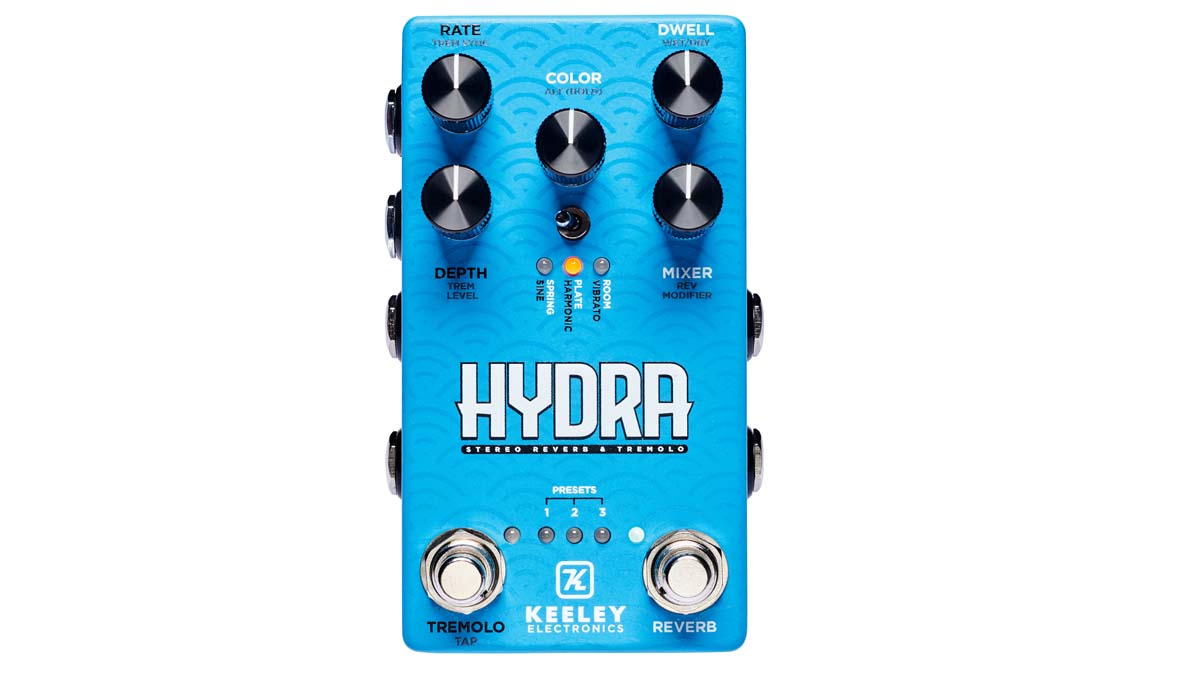
Meanwhile, the Color knob (reverb trail tone) doubles as a mode switch that’s held down to access secondary parameters for the other four knobs: Trem Sync addresses the tremolo stereo options; Trem Level, which includes a 6dB boost; Wet/Dry provides reverb stereo options; and Reverb Modifier, which has a different adjustment for each type of reverb.
These three reverb types are scrolled through and selected with a spring-loaded toggle switch, as are the trem types if the Color knob is held down.
Alternatively, you can give the Color knob a double-tap (easily done by foot because it stands prouder than other knobs) and use the respective footswitches to select the effects. With this amount of parameters available you may wish to store some of the sounds you set up, which is where those three presets come in very handy.
A quick double-tap on the tremolo footswitch puts you into preset mode where you can scroll through the three with presses on the reverb footswitch and load the chosen one with another push on the tremolo footswitch. Getting back to WYSIWYG mode is similarly easy.
Sounds
The sounds in the Hydra are all high quality. The Sine Wave tremolo offers the smooth undulations you’d expect from a lot of vintage amp tremolos, while Harmonic – based on the onboard trem found in a select few vintage amps – is a little more tonally complex.
Unlike many iterations of the effect, the Vibrato setting here is musical across most of its range; there’s no extreme adjustment available that will give you seasick pitch variations.

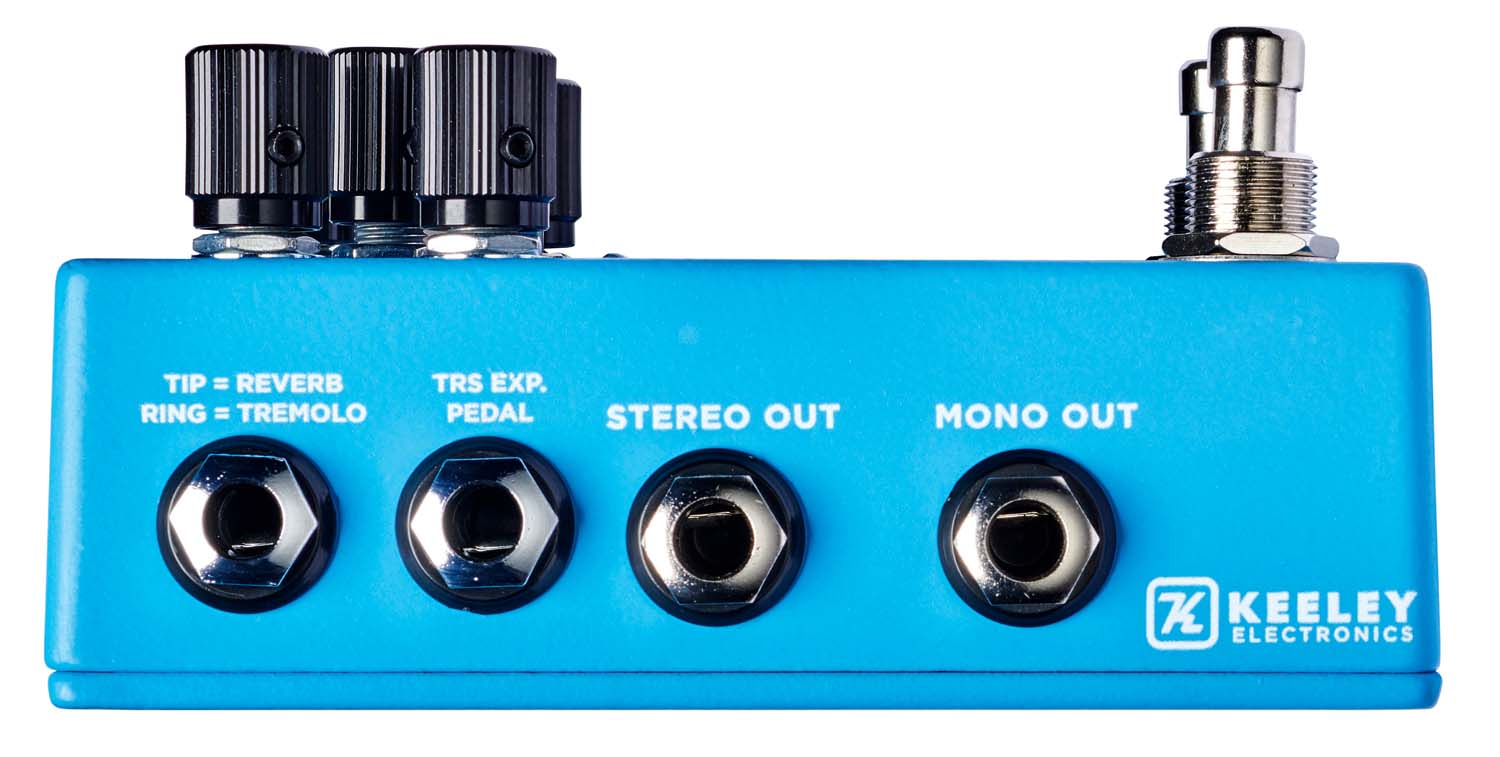
Reverbs cover all traditional guitar needs without getting too far into the esoteric. Spring is nicely authentic and you can adjust ‘Spring Age’ with the reverb modifier to keep it smooth or dial in some more pronounced echoes.
Plate sits really well with guitar sounds and has the added reverb modifier bonus of an adjustable octave up shimmer effect; combine that with some harmonic tremolo and you’ll get a really rich sound. The Room sound can be modified, too, to the point where you can conjure up cavernous spaces.
The footswitches also double up with useful performance functions: the Tremolo footswitch can undertake tap tempo for the tremolo rate, plus if you already have reverb engaged you have an Infinite Hold mode whereby the reverb keeps going as long as you hold the Reverb footswitch down, allowing you to play over the sustained sound.
In addition, there are facilities for connecting remote footswitching, a tap tempo footswitch or an expression pedal, which can be assigned to a combination of parameters.
Verdict
Not only a space-saving way to add both tremolo and reverb to your pedalboard, the Hydra also features quality sounds and has practical footswitching capabilities for handy onstage use.
Specs
- PRICE: $/£249
- ORIGIN: USA
- TYPE: Tremolo and reverb pedal
- FEATURES: Switchable true or buffered trails bypass, tap tempo, infinite hold function, expression pedal capability
- CONTROLS: Rate, Depth, Color/Mode switch, Dwell, Mixer, selector switch, Tremolo footswitch, Reverb footswitch
- CONNECTIONS: Standard inputs (L/Mono, Right), standard outputs (Stereo, Mono), TRS EXP pedal, Remote switching input
- POWER: 9V DC adaptor, 115mA
- DIMENSIONS: 73 (w) x 124 (d) x 61mm (h)
- CONTACT: Keeley Electronics
Trevor Curwen has played guitar for several decades – he's also mimed it on the UK's Top of the Pops. Much of his working life, though, has been spent behind the mixing desk, during which time he has built up a solid collection of the guitars, amps and pedals needed to cover just about any studio session. He writes pedal reviews for Guitarist and has contributed to Total Guitar, MusicRadar and Future Music among others.
“Its superpower is punching your guitar tone with presence, thickened gain and sustain”: SoloDallas SVDS Boost review
“Jimi was staying at a hotel in Times Square. He had his hair set in pink curlers and we would just talk band drama”: Electro-Harmonix founder Mike Matthews on befriending Hendrix, booking Chuck Berry and the birth of pedal culture
